Take this 2-mile walk to Piazzale Michelangelo and Abbazia di San Miniato al Monte. Watch the sunset over sweeping views of the Florence skyline – the city of the Renaissance.
Featured photo: The Florence skyline, viewed from Piazzale Michelangelo, made even more beautiful by a glowing sunset. Photo by Heidi Kaden on Unsplash. Reference: (b-8).
A Storied Walk Across the Arno
Whether this is your first time in Florence, or your 2nd or 3rd time, you can do this Firenze walk across the Arno River. It is always very gratifying to see the Florence skyline with the tower of Palazzo Vecchio, Brunelleschi’s dome, and Giotto’s bell tower in the distance.
You will see various historical sights and points of interest that will make the 2-mile (one-way) effort worth it. The destination is a 1000-year old church on top of the hill with its own story. It offers one of the best vantage points to view the Florence skyline.
This walking guide uses Google Maps extensively: from the map route and directions to the 360 photos that show specific locations and views. So whip up that smartphone and make sure you have Google Maps on the ready.
Starting point: Piazza della Signoria
Destination point: Piazzale Michelangelo and Abbazia di San Miniato al Monte
Distance (one-way): 2.0 miles / 3.2 km, 269 ft ascent
According to Google Maps, this walk can be done in as little as 44 minutes (one-way). Double that for a round-trip on the same path. I’ve never done that – you want to look at the sights, right? You should add another 45 minutes, at least, because you need to pause, rest, and look.
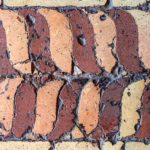
7 Points of Interest
In this Firenze walk, we will hit these 7 points of interest:
- Piazza della Signoria / Palazzo Vecchio / Loggia dei Lanzi
- Piazzale degli Uffizi / Uffizi Gallery
- The Vasari Corridor
- Ponte Vecchio (Old Bridge)
- Piazza Pitti / Palazzo Pitti
- Piazzale Michelangelo
- Abbazia di San Miniato al Monte (Abbey or Basilica of St. Minas on the Mountain)
If you want to watch the sun setting over the Florence skyline, take this walk 1.5-2 hours before sunset.
Let’s go! Click on the link to launch the walking route via Google Maps.

Passeggiata to the Florence Skyline & Sunset
1. Piazza della Signoria / Palazzo Vecchio / Loggia dei Lanzi
Start from the Piazza della Signoria, the main town square of Florence. This piazza is a feast for the eyes. You can enjoy many historical artifacts without entering a museum.
(If you haven’t visited this Piazza before, then add about 15-30 minutes in order to check out the various historical sculptures in this piazza).
VIRTUAL SCENE, below: The historic Piazza della Signoria. For all Google StreetView 360 photos in this post, please use the following viewing instructions.
VIRTUAL SCENE (instructions to view this 360 Google StreetView photo)
You can interact with 360 photos and see all around!
Move/Rotate the photo: Use your mouse or fingers to drag and rotate the view around or upward-downward.
On tablets or desktops: The square icon on the upper right corner maximizes or minimizes the photo.
Magnify the view: To zoom in or out, use the + or – sign on the lower right corner.
This piazza is home to the imposing and crenelated Palazzo Vecchio (Old Palace, 1299, by architect Arnolfo di Cambio). It is both a museum and Florence’s town hall.
The Palazzo figured prominently in Florence’s political history. It was the scene of momentous political decisions and intrigues for the city-state during the medieval and renaissance period.
The infamous painting competition between Da Vinci and Michelangelo happened here. Or technically, it didn’t: Michelangelo never got to apply paint to his assigned wall. While Da Vinci’s painting had a meltdown, literally.
When Giorgio Vasari renovated the palazzo in 1555-1557, he painted over what was there with his own frescoes. We have lost any trace of what may have been there. So, when even a little accidental dab of paint from Da Vinci’s brush is considered sacred – this constitutes a double fresco fiasco!
I highly recommend visiting the palazzo to first-time visitors to Florence. It requires 1-2 hours if you decide to visit.
A sculpture of David (1504, by Michelangelo, a copy) and another of Hercules and Cacus (1534, by Bandinelli) flank the entrance to the Palazzo.
To the left of the Palazzo Vecchio is the marble and bronze Fountain of Neptune (1565-1574, by Bandinelli, Ammannati, et al). Farther left is a bronze Equestrian Monument of Grand Duke Cosimo I (1594, by Giambologna).
At the front right of the Palazzo, is the Loggia dei Lanzi – an open arched gallery displaying several well-known sculptures: The Rape of the Sabine Woman (1582, by Giambologna), Perseus with the Head of Medusa (1554, by Cellini), Hercules and the Centaur (1599, by Giambologna), The Rape of Polyxena (1865, by Fedi), a pair of Medici lions (one Roman from the 2nd century, and the other from 16th century), and several Roman era sculptures discovered in Rome.

2. Piazzale degli Uffizi / Uffizi Gallery
To the right of the Palazzo Vecchio across Via della Ninna is the Uffizi Gallery, which is the primary museum of Florence.
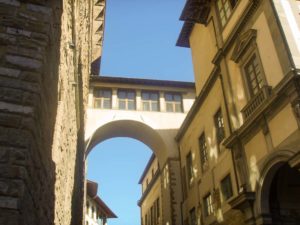
As you cross Via della Ninna to enter the Piazzale degli Uffizi, look up on the left above the street. You’ll see a structure with an arched bottom. This is the Vasari Corridor connecting the Palazzo Vecchio with the Uffizi Gallery. More about this in the next section.
The Uffizi Gallery sits along the length of the promenade Piazzale degli Uffizi. It houses many of the most significant artworks of the Italian Renaissance period. If you decide to visit the Uffizi, you will need at least 2-3 hours inside (longer, and even multiple days if you are a serious art enthusiast).
While walking along the Piazzale degli Uffizi, note the statues in the niches along the promenade. These are 28 famous Florentines (or Tuscans) of the Renaissance period – philosophers, poets, leaders, writers, painters, architects, sculptors, scientists, and explorers.
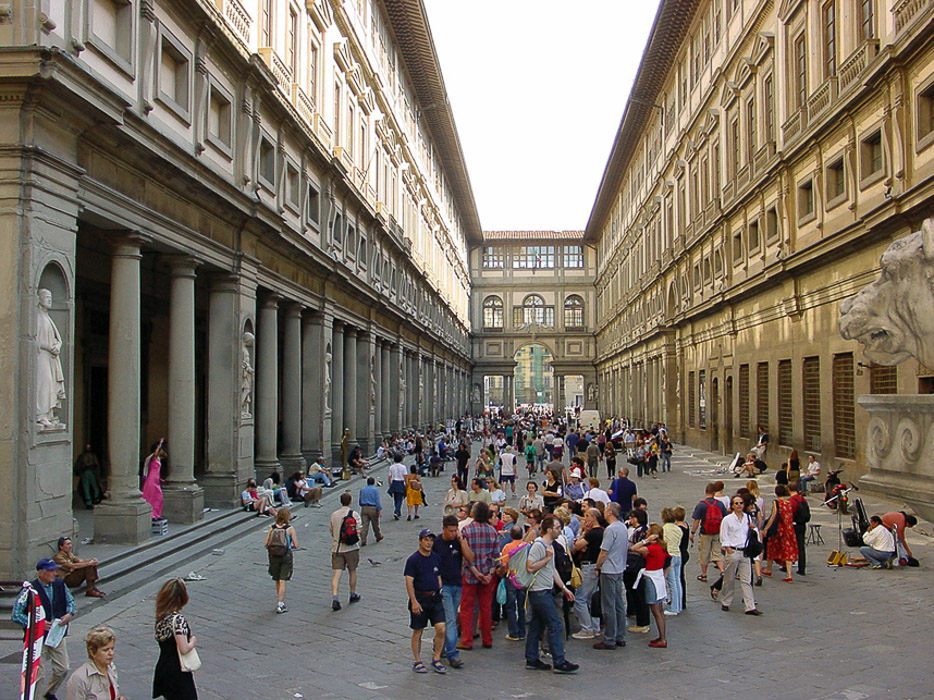

3. The Vasari Corridor (Corridoio Vasariano)
The Vasari Corridor was built in 1565 and named after the Italian artist, architect and art historian Giorgio Vasari, who designed the half-mile long corridor.
Grand Duke Cosimo I de’ Medici, who was not quite the type to hobnob in the streets with the commoners, commissioned the private covered walkway which allowed him to walk unmolested from his office at the Uffizi and Palazzo Vecchio to his home at the Pitti Palace across the Arno River.
The Vasari Corridor winds its way from Palazzo Vecchio through the length of the Uffizi Gallery, then along the banks of the Arno River. It then crosses the Arno atop the Ponte Vecchio, hugs a tower, and twists and turns along the Church of Santa Felicita and several buildings before reaching the Palazzo Pitti.
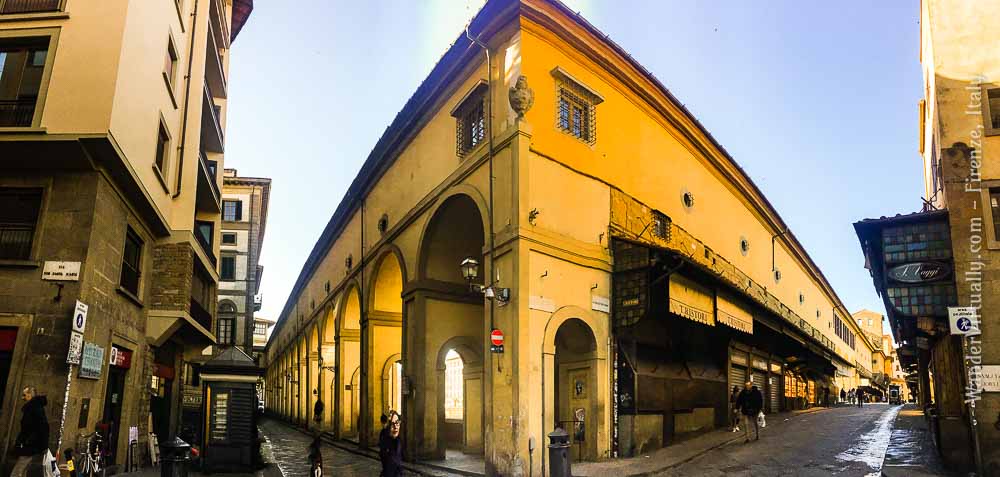
Let’s use the Google route to follow the Vasari Corridor at ground level. Continue to walk along the Piazzale degli Uffizi. When you reach the end of the promenade, turn right and walk along the banks of the Arno River. Look up and note the covered sidewalk – you are walking under the Vasari Corridor.

4. Ponte Vecchio (Old Bridge)
You’ll reach Ponte Vecchio at the intersection of Lungarno degli Archibusieri and Via Por Santa Maria. Turn into and walk along this 14th century stone bridge that straddles the Arno River.
It’s probably the most photographed bridge in Italy. Jewelry shops flank both sidewalks of the bridge. You should probably just treat them as eye candy!
Midway through the bridge, there are 3 archways on the left that frame beautiful mountain views as the Arno flows from the east. Don’t forget to look above the shops and arches to see the lofty Vasari Corridor extending its way along the length of the bridge.
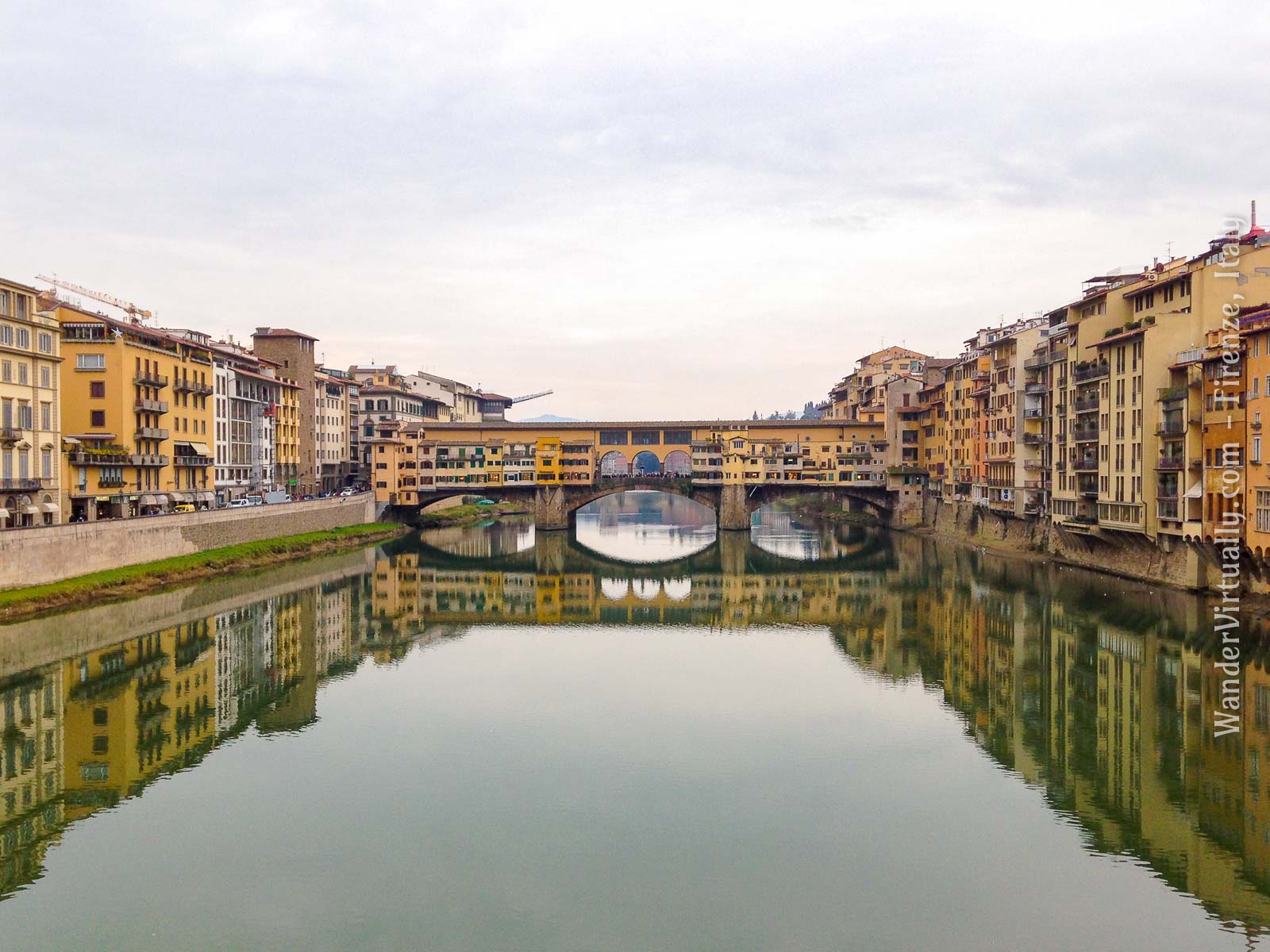
On the opposite side of the arches, your eyes will rest on the bust of Benvenuto Cellini. Cellini was a colorful 16th-century Florentine sculptor, goldsmith, and sometime soldier. One of his most famous works was Perseus with the Head of Medusa, a bronze sculpture now standing at the Loggia dei Lanzi in Piazza della Signoria.
To resume your walk, take Via de’ Guicciardini ahead to go to the Piazza Pitti.

5. Piazza Pitti / Palazzo Pitti
The Palazzo Pitti is fronted by the rather bare Piazza Pitti. It was the grand palace and last primary residence of the Medici rulers in Florence. Previously, the Medicis lived in a comparatively smaller but still sumptuous mansion in the town center (now called Palazzo Medici Riccardi). Later, they moved to the Palazzo Vecchio.
Grand Duke Cosimo I de’ Medici’s wife, Eleanor of Toledo Spain, purchased the Renaissance style palazzo from the Pitti family in 1549. The architect Giorgio Vasari enlarged the palace and added the covered walkway from Palazzo Pitti to Palazzo Vecchio. Later, the park-like Boboli Gardens were added to the rear of the palace.
Today, the palazzo is a museum housing many Medici era furnishings as well as some of their art collections.
To resume your walk, head back towards the Ponte Vecchio then follow the Via de’ Bardi until it splits and shifts to the right (see map).

6. Piazzale Michelangelo
After walking on sidewalks for some time, you will take the stairs Scalea del Monte alle Croce on the left to go up the hill.
VIRTUAL SCENE, below: The Scalea del Monte alle Croce allows you to scale the steep hill with broad walker-friendly steps.
When you reach the huge piazzale, it will either have lots of stalls selling food or souvenirs, or simply a huge parking lot. Walk around the piazzale to appreciate the views of the Florence skyline and the banks of the Arno River. There is a copy of Michelangelo’s David in the center of the piazzale.
VIRTUAL SCENE, below: the Florence skyline as seen from Piazzale Michelangelo.
You can find a public faucet/water fountain on the south-east corner of the piazzale.
After that long walk, you might be lucky to find some of the food stalls around the piazzale still open for a quick street food snack.
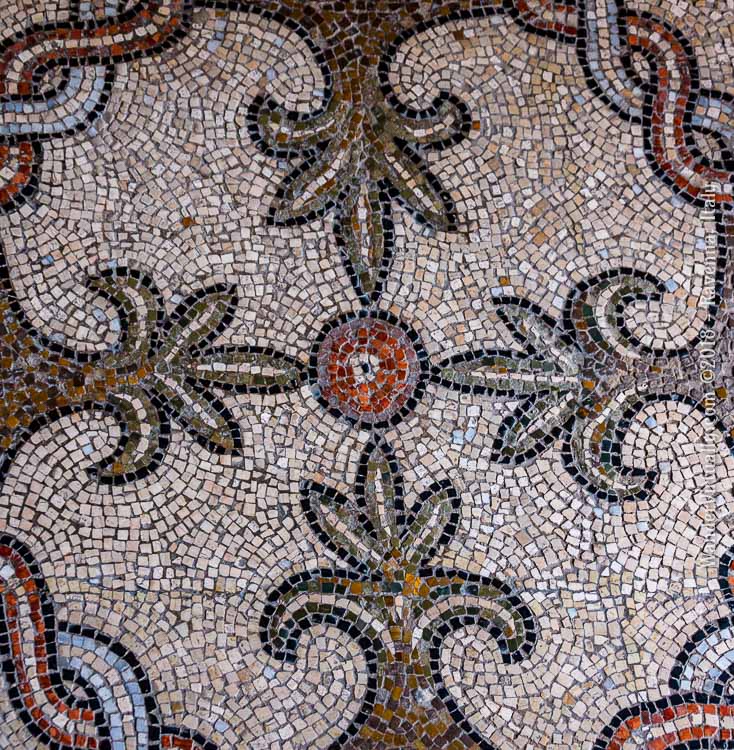
If you are taking this walk between late April and May, you are in luck. There is a rose garden on the lower west side of the piazzale (left, when facing the river): Giardino delle Rose. While the lower east side has an extensive iris garden: Giardino dell’Iris.
From late April to May both gardens are in full bloom and give a spectacular show. You can visit the gardens – admission is free but check the websites for opening schedules. Both are only a few minutes walk down from the piazzale.

7. Abbazia di San Miniato al Monte
If you’re here for the views and the sunset, there is an even better vantage point higher up the hill at the Abbazia di San Miniato, sometimes called Basilica of San Miniato.
Before the sun sets, start walking towards the Abbazia di San Miniato from the piazzale by walking along the sidewalk of Viale Galileo. It’s only a short distance starting from the southwest corner of the piazzale.
VIRTUAL SCENE, below: When you see this structure, climb up the stairs to the upper level.
At the upper level (Via delle Porte), cross the street and climb another set of stairs to go towards the basilica.
Go inside the basilica and admire the frescoes inside. (Note that there is a dress code for churches in Italy: no exposed shoulders and thighs inside churches. Observe respectful silence).
This church is a thousand years old. It was built in 1018 for St. Miniato, a Christian martyr who was decapitated in the 3rd century when Christians were still persecuted. The story goes: he picked up his severed head, put it back on and walked up this mountain to die here. His remains are inside the basilica.
There is a small shop and a bathroom on the left side (when facing the building) outside of the basilica. The bathroom fee, if I remember right, was €1.
Hopefully, you’re in time for the beautiful sunset. Enjoy the sweeping view of the Florence skyline from this peaceful location.
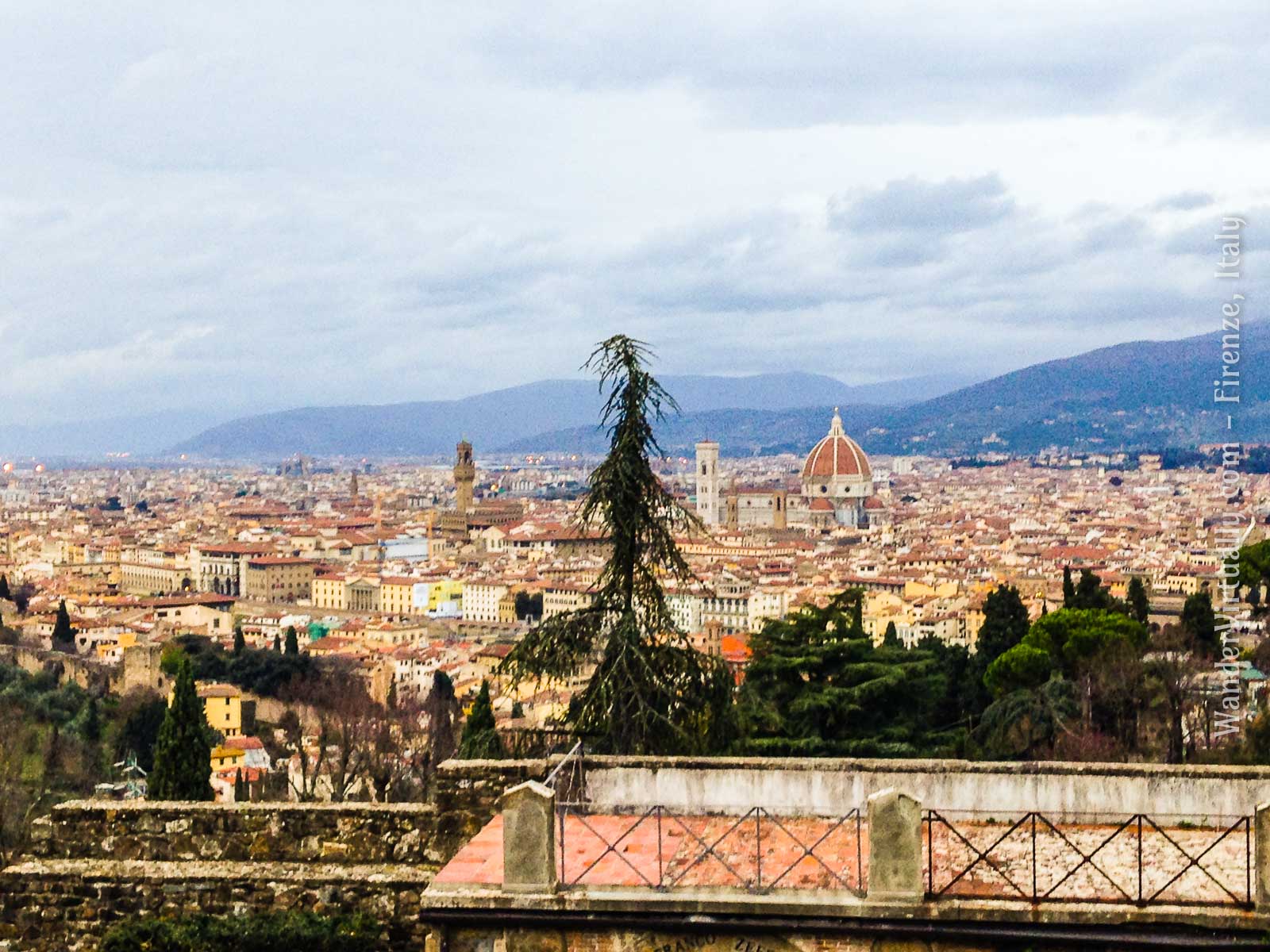

How About an Aperitivo or Dinner, This Side of the Arno?
You can have dinner on this side of the Arno River before or after sunset viewing at San Miniato al Monte (check sunset time for the day, since it varies from month to month).
There’s a highly-rated place where you can have pizza and aperitivo on the southeast side of the piazzale, called Terrazze Michelangelo Pizzeria. On this side of the Arno River, there are some well-rated osterias and trattorias on the way down if you decide to walk back to town. Use Google Maps to check on locations and ratings.
Return Walk
This return route from Piazzale Michelangelo to Piazza della Signoria is via the bridge Ponte alle Grazie. It has a slight detour that allows you to see Piazza Santa Croce where the Basilica di Santa Croce is located.
Starting point: Piazzale Michelangelo
Destination point: Piazzale della Signoria
Distance: 1.1miles / 1.8 km, 197 ft descent
Too Tired to Walk Back?
The bus is very convenient. For example, bus number 23 operates past midnight and can bring you close to the Piazza del Duomo. Depending on where you want to get off on the other side of the river, there are bus stops in or near the piazzale. Use Google Maps to determine the best bus and route for your destination.
Note that you’ll need a pre-bought ATAF bus ticket. You could buy a ticket from the driver, but that is not guaranteed availability. If you have signed up for this service from Italian phone companies you could also get an ATAF bus ticket via SMS.
Another option is to take a taxi back to your hotel or other points in town. There is a taxi stand on the southwest side of the piazzale. If there are no taxis in the stand, you can call one from Taxi 4390 (eco taxi) or Taxi 4242.
Websites for Points of Interest on this Walk
- Palazzo Vecchio
- Uffizi Gallery
- Pitti Palace (Palazzo Pitti)
- Giardini delle Rose at Piazzale Michelangelo
- Giardini dell’Iris at Piazzale Michelangelo (Italian only)
- Abbazia di San Miniato al Monte (Italian only)

Related Posts

Get the story The Medici: Benefactors Of Your Sightseeing In Florence

Check my post on Hercules and the Centaur at the Piazza della Signoria
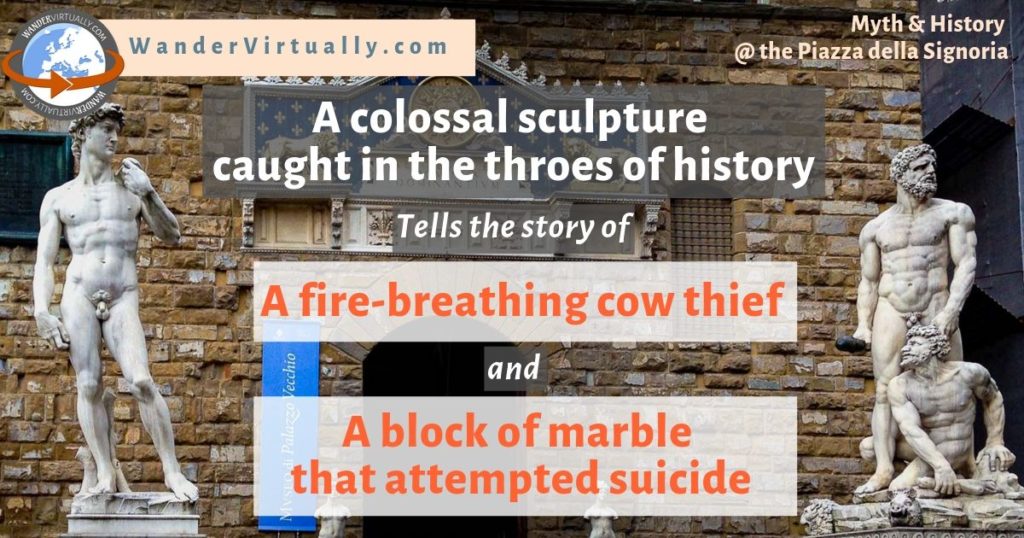
Check my post on Hercules and Cacus at the Piazza della Signoria
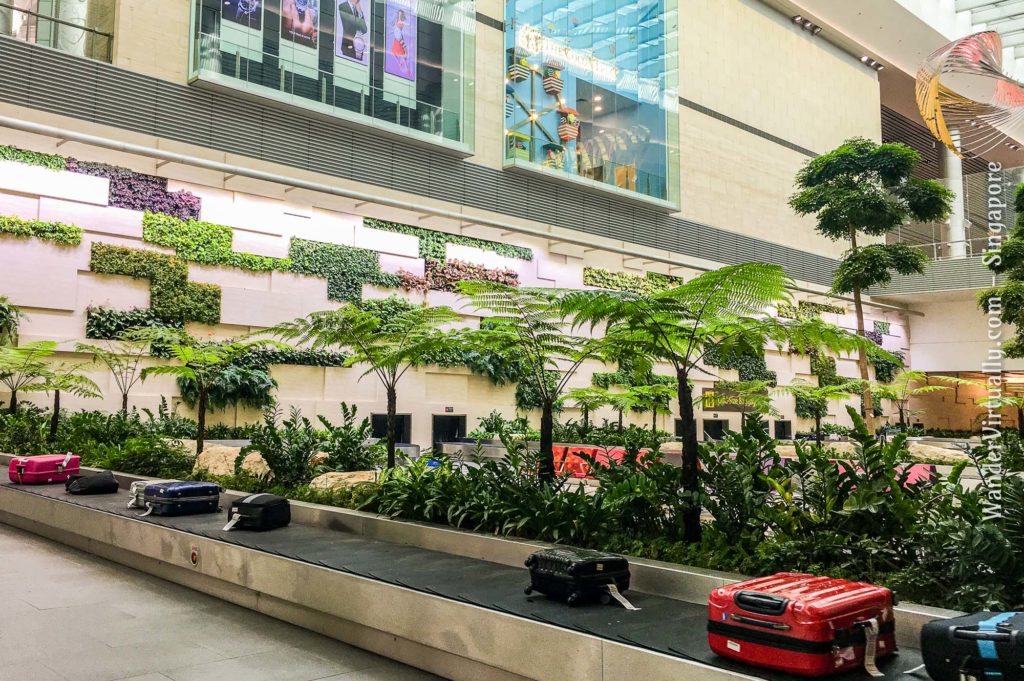
I use simple, inexpensive, but useful tools for travel. Find out what I pack for my trips.
Visit the Italy page for more stories and travel tips …
BELLA ITALIA
Fascinating ancient stories.
Practical travel tales and tips.
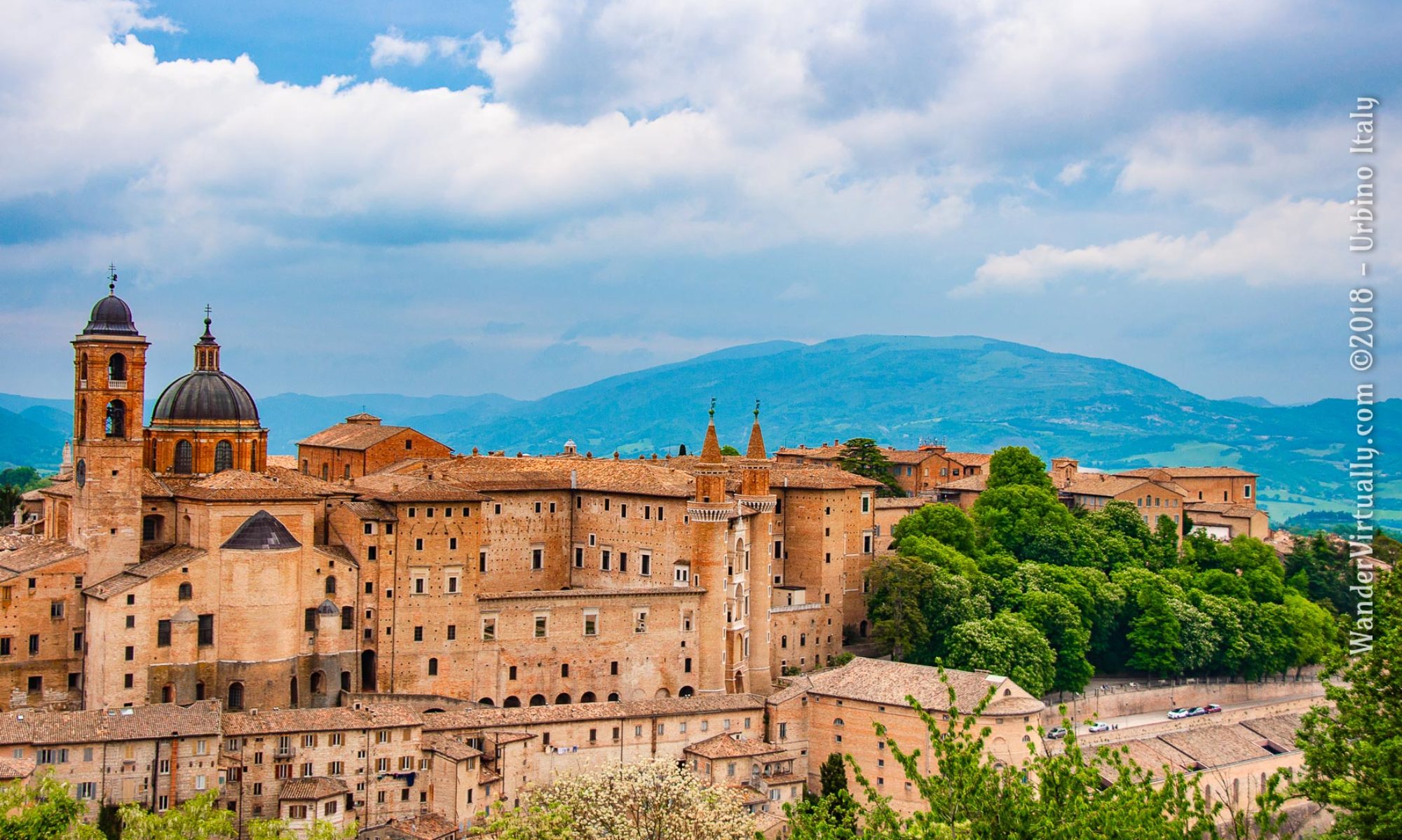

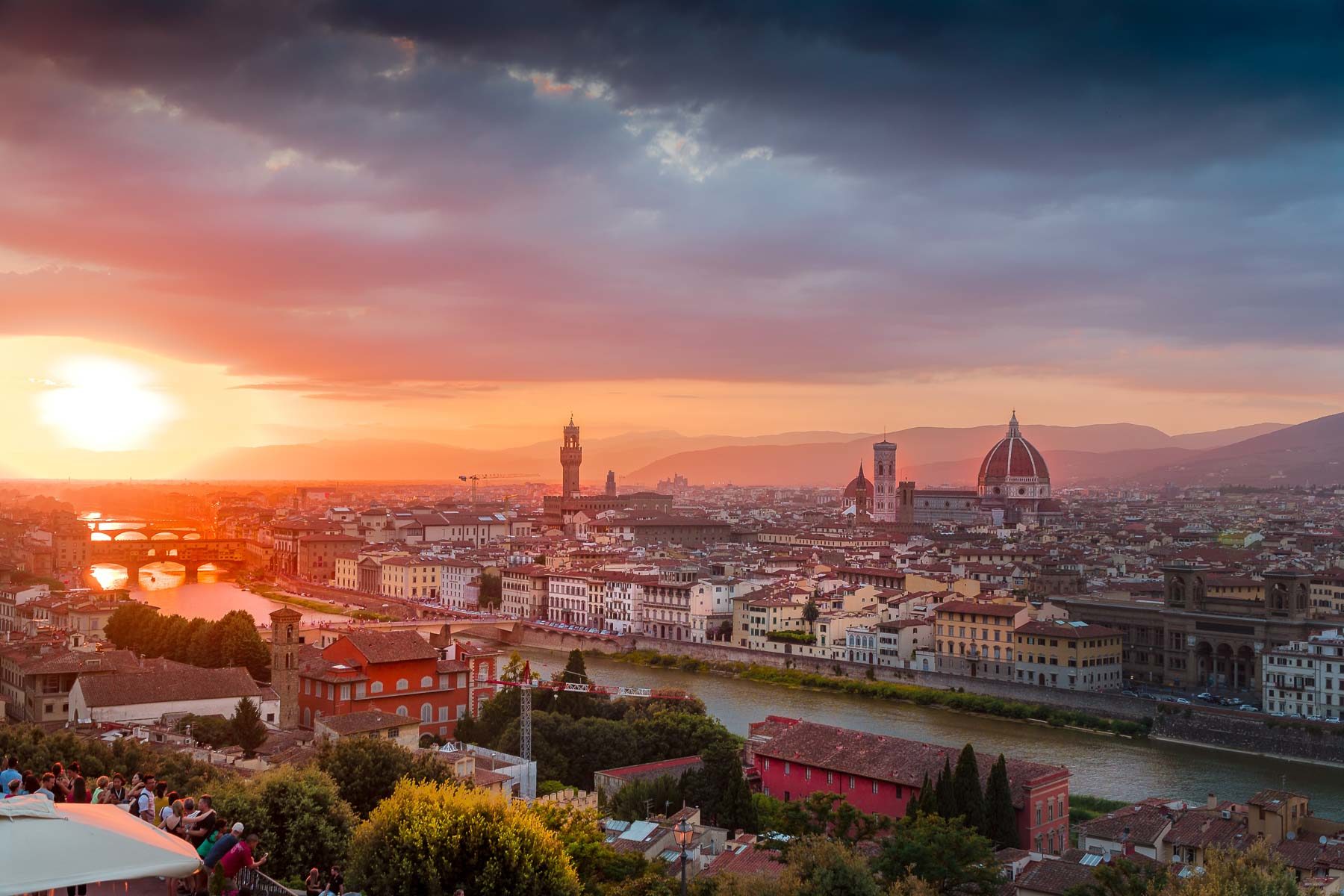
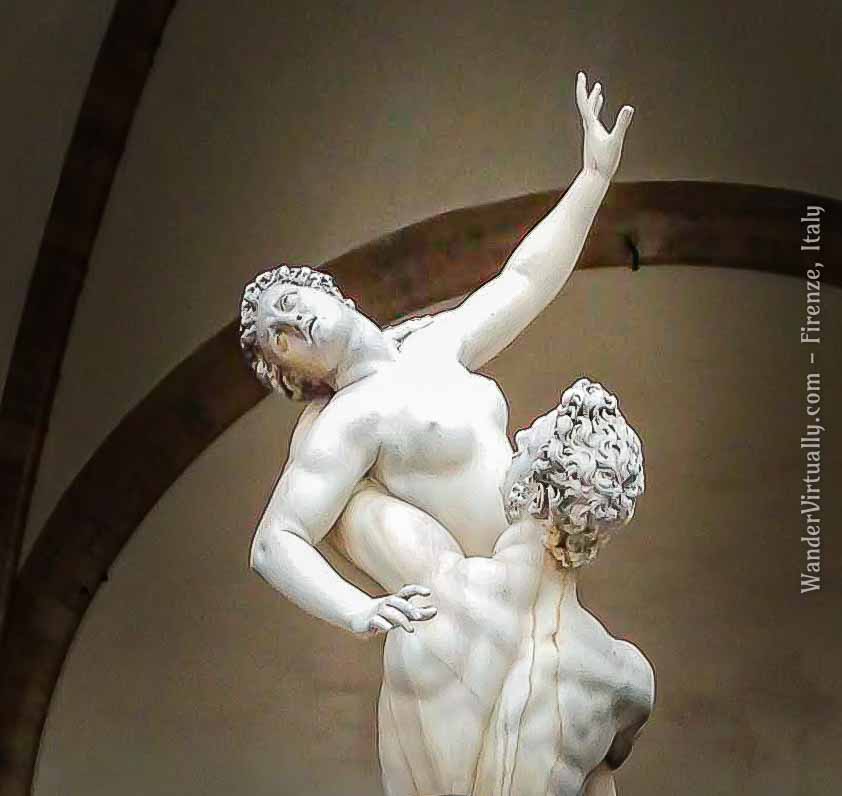


The monumental cemetery in front and back of the church contains the tombs of illustrious men, such as Carlo Lorenzini (Collodi), author of Since the church of San Miniato is located just outside the city walls it takes a bit more planning to arrive. It is easily accessible by foot, car, bike (for those who like to climb) and by bus. If you like the idea of a panoramic hike, taking in the green hills that surround Florence and the spectacular views of the skyline then your best option is to walk up to Piazzale Michelangelo. You can follow several paths from either the Piazzetta of San Miniato or the path behind the Torre di San Nicolo. Once you are at the panoramic terrace, climb the remaining steps to the top of Via delle Porte Sante to arrive at the door of the church.